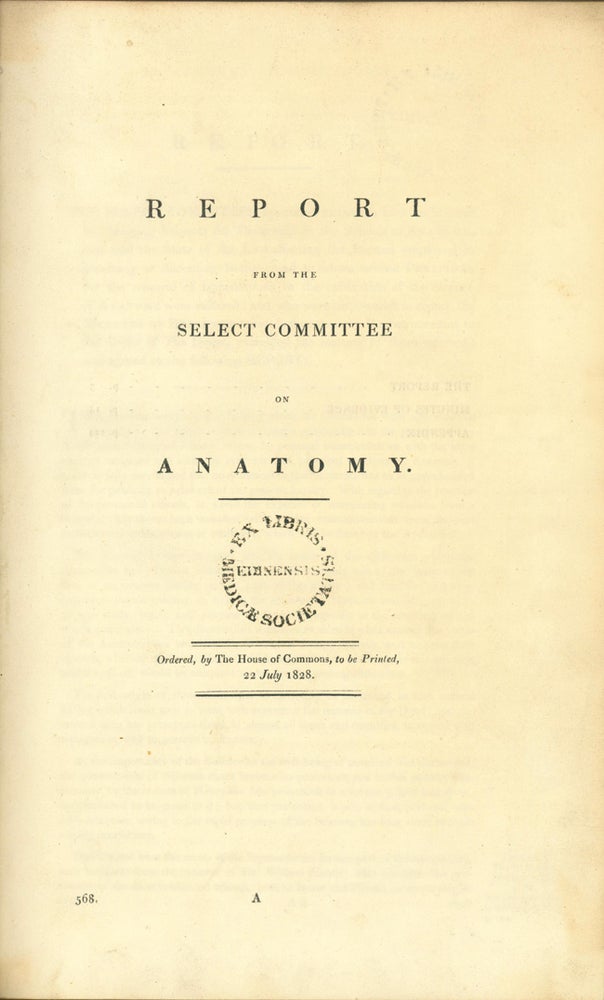
Report of the select committee on anatomy
Publisher Information: London: 1828.
Parliament. House of Commons. Report from the select committee on anatomy. Folio. 150pp. [London:] House of Commons, 22 July 1828. 331 x 212 mm. 19th century boards, rebacked and recornered in calf, light edgewear. Very good copy. Old medical library stamp on title and first page.
First Edition of this highly interesting and entertaining report on the British body-snatching crisis. Since the mid-eighteenth century, obtaining cadavers for teaching purposes had been regulated in Britain by the Murder Act of 1752, which stipulated that only the corpses of executed criminals could be used for dissection. By the beginning of the nineteenth century, however, improvements in medical science, coupled with a substantial drop in the number of executions, caused the demand for cadavers to far outstrip the legal supply. This situation was ripe for exploitation by "resurrection men," criminals who robbed the graves of the newly deceased and sold their corpses to teachers of anatomy, who of necessity turned a blind eye to the illegality of these transactions. Some grave-robbers even resorted to murder, including the infamous William Burke, who in December 1828 was arrested in Edinburgh for the murders of over a dozen victims whose corpses he and his partner Hare sold to an anatomical demonstrator connected to Edinburgh University.
In the first half of 1828, in response to increasing calls for reform, the British Parliament appointed a committee to "enquire into the manner of obtaining subjects for dissection by schools of Anatomy and the State of law affecting persons employed in obtaining and dissecting bodies." During the course of its investigation, the committee heard testimony from a wide range of witnesses, from eminent medical men to procurers of bodies for medical schools (these last identified only by initials). The medical men included Sir Astley Cooper, Benjamin Collins Brodie, John Abernethy, William Lawrence, Herbert Mayo, Granville Sharp Pattison (who himself was indicted for body-snatching at the age of 23), Thomas Southwood Smith, Henry Halford, John Webster and Benjamin Harrison, the treasurer of Guy's Hospital. The witness list can be found on page 13 of the committee's report. The testimony of these men, reproduced in full in the report, is followed by several appendices, including tables of paupers' deaths broken down by parish; the committee was proposing legislation that would allow the state to seize unclaimed corpses from workhouses and sell them to surgical schools. The committee's efforts were successful: In 1832 Parliament passed the Anatomy Act, granting licenses to teachers of anatomy and giving physicians, surgeons and medical students legal access to corpses unclaimed after death. Wise, The Italian Boy: A Tale of Murder and Body Snatching in 1830s London (2004). Garrison-Morton.com 7096.
Book Id: 40962Price: $1,000.00
